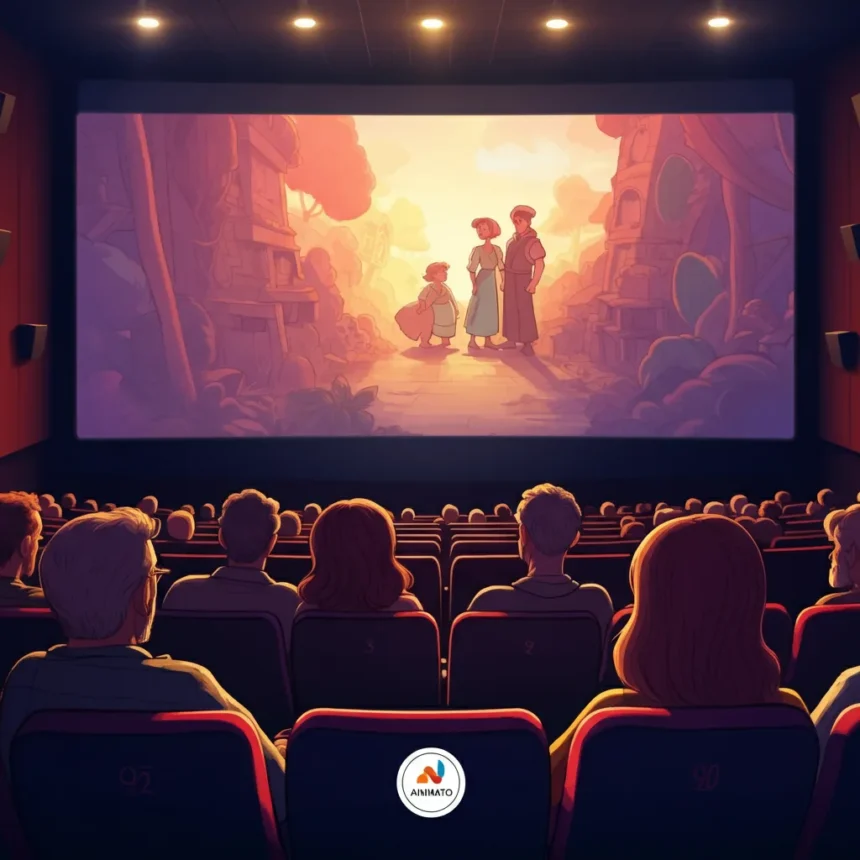Animated films have long been associated with children’s entertainment, filled with colorful characters, catchy songs, and lessons about friendship and kindness. But over the years, animation has transcended its “for kids” label, evolving into a genre that captivates viewers of all ages. Today, animated films are as diverse, complex, and culturally significant as their live-action counterparts.
This blog explores the rise of animation as a medium for all audiences, the factors behind this shift, and why animated films deserve to be taken seriously—not just as family entertainment but as an art form that enriches storytelling on a global scale.
The Evolution of Animation
Animation has existed for over a century, but its perception as entertainment solely for children started to dominate in the mid-20th century with the rise of family-friendly studios like Walt Disney. Films like Snow White and the Seven Dwarfs and Cinderella set the precedent for animated features to cater to younger viewers while sprinkling in enough humor to keep parents entertained.
Fast-forward to the 21st century, and the scope of animation has expanded beyond princesses and fairy tales. Studios such as Pixar, DreamWorks, and Studio Ghibli are crafting stories that blend lighthearted fun with complex narratives, exploring emotions, philosophical ideas, and even existential questions.
Take Inside Out, for example. While it’s a visually stunning and engaging adventure for kids, its depiction of emotional intelligence and psychological development strikes a deep chord with adults. Similarly, Spirited Away, an Academy Award-winning masterpiece, is adored not only for its magical world but also for its commentary on greed and environmental sustainability.
Animation is no longer bound by its “child-centric” reputation—it is now a platform for storytelling in its most innovative form.
Modern Animated Films Speak to Everyone
The transition from purely children’s entertainment to content appealing to wider audiences is no accident. By tackling universal themes, blending sophisticated humor, and addressing mature topics, animated films have paved their way into the hearts of young and old alike.
Universal Themes with Depth
Modern animated films often tackle universal themes that resonate with all ages. Take, for instance, Coco by Pixar, which dives into the culturally rich traditions of Día de los Muertos while exploring themes of family and legacy. Or Zootopia, which cleverly examines prejudice and systemic inequality in a way that even adults find thought-provoking.
These films have something for everyone—breathtaking visuals for the kids, layered narratives and nuanced themes for the adults, and timeless messages that linger long after the credits roll.
Sophisticated Humor
If there’s one thing all great animated films share, it’s the ability to balance humor for adults and children. Studios like DreamWorks and Illumination have mastered this delicate dance, crafting moments that make both six-year-olds and sixty-year-olds laugh.
Take Shrek, for example. While kids might chuckle at Donkey’s antics, adults catch the clever satire on traditional fairy tales and subtle innuendos peppered throughout the film. This multi-layered humor ensures that animated films have universal appeal, making them enjoyable for entire families to watch together.
Tackling Serious Topics
Animated films also address deeply impactful and mature topics. From grief and loss (Up and The Lion King) to war (Grave of the Fireflies), the medium has not shied away from portraying life’s complexities. Animation provides an artistic freedom that allows filmmakers to explore sensitive topics visually and symbolically in ways live-action films often cannot achieve.
The Global Impact of Animation
Animated films aren’t just reaching broader audiences; they’re also bridging cultural gaps. Studios worldwide are creating stories that reflect their unique heritages, inviting viewers to learn and connect with different cultures.
Studio Ghibli from Japan is a perfect example, with films like My Neighbor Totoro and Princess Mononoke introducing global audiences to Japanese folklore and values. Meanwhile, Spider-Man Into the Spider-Verse brought inclusivity to the forefront of superhero stories, blending innovative animation styles with a quintessential coming-of-age narrative.
Even platforms like SSRmovies, which aggregate films of various genres, reflect this increasing interest in diverse animated content. It’s clear that animation’s ability to transcend language and cultural barriers makes it a global artistic force.
Why Adults Should Watch Animated Films
Still hesitant about giving animated films a chance? Here are just a few reasons why they deserve to be part of your watchlist, no matter your age.
A Refreshing Visual Experience
Animation, with its limitless possibilities, offers stunning visuals often unmatched by live-action films. From the dreamy landscapes of Howl’s Moving Castle to the high-octane action sequences of The Lego Movie, animation gives creators the artistic freedom to push visual boundaries, making it an immersive experience.
Emotional Storytelling
The combination of relatable storytelling and heartfelt performances makes animated films a vessel for pure emotional impact. Who could forget the tearjerking intro of Up or the bittersweet ending of Toy Story 3? Animation’s ability to evoke powerful emotions proves that they’re far from being only “kids’ stuff.”
Breaking Expectations
Part of animation’s success with adults lies in its unpredictability. While live-action films often follow formulaic approaches, animated movies surprise audiences with imaginative worlds, characters, and narratives that couldn’t exist elsewhere. Want proof? Just watch Inside Out or Spider-Man Into the Spider-Verse.
The Future of Animation
As the animation industry continues to innovate, the line between “family-friendly” and “must-see for adults” will continue to blur. Streaming platforms are investing heavily in animated originals focused on adults, such as Love, Death, & Robots and BoJack Horseman. This changing landscape signals a future where animation isn’t seen as a genre for kids, but as a medium capable of telling stories for everyone.
We’re also likely to see advancements in animation technology, from hyper-realistic visuals to AI-assisted animation, leading to even more groundbreaking storytelling. The possibilities are endless!
Discover the Magic of Animation
Animated films are no longer just for kids. They’re thought-provoking, visually impressive, and emotionally resonant masterpieces that appeal to audiences of all ages. Whether you’re laughing at Donkey in Shrek, crying at Carl’s love story in Up, or marveling at the artistry of Studio Ghibli, animation continues to redefine what cinema can achieve.
Next time you’re deciding what to watch, don’t overlook the animated section. Who knows? You might just discover a new favorite film that changes the way you see storytelling forever.





